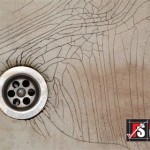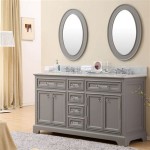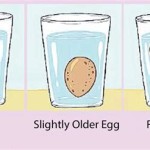Understanding the Single Bathroom Sink and Vanity: A Comprehensive Guide
The single bathroom sink and vanity represent a cornerstone of bathroom design, offering a functional and often stylish element within a limited space. Selecting the appropriate single sink and vanity requires careful consideration of several factors, including bathroom size and layout, available storage needs, plumbing configurations, preferred materials, and desired aesthetic. This article explores the various aspects of single bathroom sinks and vanities, providing a detailed overview to aid homeowners and designers in making informed decisions.
A single bathroom sink and vanity unit typically consists of a sink basin integrated within or mounted atop a cabinet-like structure. This structure, referred to as the vanity, provides storage space beneath and potentially around the sink. Unlike double sink vanities designed for shared use in larger bathrooms, single sink vanities cater to individual needs and are particularly well-suited for smaller bathrooms, powder rooms, or en-suite bathrooms designed for a single occupant.
The primary function of a single bathroom sink and vanity is to provide a dedicated space for personal hygiene activities such as handwashing, teeth brushing, and grooming. The integrated storage within the vanity unit offers a convenient location for storing toiletries, cleaning supplies, towels, and other bathroom essentials, helping to maintain a clutter-free environment.
Key Point 1: Types of Single Bathroom Sinks
Selecting the right type of sink is crucial for both functionality and aesthetics. Single bathroom sinks are available in a variety of styles, each with its own advantages and disadvantages. Understanding these different types is essential when planning a bathroom renovation or new construction project.
Undermount Sinks: Undermount sinks are installed beneath the countertop, creating a seamless transition between the sink and the countertop surface. This design offers a clean and modern look, making it easy to wipe water and debris directly from the countertop into the sink. Undermount sinks require a solid countertop material such as granite, quartz, or marble, as the edges of the countertop are exposed around the sink opening. The cost of installation can be slightly higher due to the specialized countertop fabrication required.
Drop-In Sinks (Self-Rimming Sinks): Drop-in sinks, also known as self-rimming sinks, are installed by dropping them into a pre-cut hole in the countertop. The rim of the sink sits on top of the countertop, providing support and preventing water from seeping underneath. Drop-in sinks are generally easier to install than undermount sinks and can be used with a wider range of countertop materials, including laminate and tile. However, the raised rim of the sink can create a lip that traps dirt and debris, requiring more frequent cleaning.
Vessel Sinks: Vessel sinks are freestanding basins that sit on top of the countertop, resembling a decorative bowl. Vessel sinks offer a unique and stylish aesthetic, often serving as a focal point in the bathroom. They come in a wide variety of shapes, sizes, and materials, including glass, ceramic, stone, and metal. Vessel sinks typically require a taller faucet to accommodate the height of the basin. Installation can be more complex, requiring careful attention to plumbing connections and countertop support.
Console Sinks: Console sinks are supported by decorative legs or a frame, rather than a traditional vanity cabinet. Console sinks offer a more open and airy look, making them suitable for smaller bathrooms where space is limited. They typically provide limited storage but can be paired with open shelving or decorative baskets for additional storage. The exposed plumbing can be considered a design element or concealed with decorative covers.
Wall-Mounted Sinks: Wall-mounted sinks are attached directly to the wall, without the need for a countertop or vanity cabinet. These sinks offer a minimalist and space-saving design, making them ideal for small bathrooms or powder rooms. Wall-mounted sinks provide easy access for cleaning and can be installed at a custom height to accommodate users of different heights. Plumbing connections are typically exposed beneath the sink, requiring careful consideration of aesthetics or the use of decorative plumbing fixtures.
Key Point 2: Vanity Styles and Materials
The vanity component of a single sink and vanity unit not only provides storage but also contributes significantly to the overall style and functionality of the bathroom. The vanity's style, materials, and construction quality influence its durability, aesthetic appeal, and storage capacity. Choosing the right vanity requires considering both practical needs and design preferences.
Traditional Vanities: Traditional vanities often feature ornate details, such as raised panel doors, decorative moldings, and antique-inspired hardware. They are typically made from solid wood or wood veneer and finished with rich stains or painted finishes. Traditional vanities are well-suited for bathrooms with a classic or formal aesthetic.
Modern Vanities: Modern vanities are characterized by clean lines, minimalist designs, and a focus on functionality. They often feature sleek, handle-less doors and drawers with push-to-open mechanisms. Modern vanities may be made from materials such as MDF (Medium-Density Fiberboard) with high-gloss lacquered finishes or natural wood veneers. They can be either wall-mounted or floor-standing.
Contemporary Vanities: Contemporary vanities blend elements of both traditional and modern styles, offering a balance of form and function. They may feature simple, clean lines with subtle decorative details. Contemporary vanities are available in a wide range of materials and finishes, allowing for customization to suit various bathroom styles.
Farmhouse Vanities: Farmhouse vanities evoke a rustic and charming aesthetic, often featuring distressed finishes, shiplap details, and reclaimed wood accents. They may incorporate elements such as open shelving, apron-front sinks, and vintage-inspired hardware. Farmhouse vanities are ideal for creating a warm and inviting bathroom atmosphere.
Materials for Vanity Construction: The materials used in vanity construction significantly impact its durability and resistance to moisture. Solid wood vanities offer the highest level of durability and a natural aesthetic but can be more expensive. MDF and plywood are commonly used as more affordable alternatives, providing good stability and moisture resistance when properly sealed. Laminate and melamine finishes offer a cost-effective and easy-to-clean surface. Countertop materials such as granite, quartz, marble, and porcelain are commonly paired with vanities, offering varying levels of durability, stain resistance, and aesthetic appeal.
Key Point 3: Considerations for Space and Plumbing
Before selecting a single bathroom sink and vanity, it is essential to accurately measure the available space and consider the existing plumbing configuration. Proper planning ensures that the chosen vanity fits comfortably within the bathroom and that plumbing connections can be made without significant alterations.
Space Planning: Measure the width, depth, and height of the available space for the vanity. Consider the placement of doorways, windows, and other fixtures to ensure that the vanity does not obstruct traffic flow or interfere with the operation of other bathroom elements. Allow for adequate clearance around the sink for comfortable use. In small bathrooms, consider wall-mounted vanities or corner vanities to maximize space.
Plumbing Considerations: Identify the location of the existing water supply lines and drainpipe. Determine whether the vanity will require any plumbing modifications, such as relocating pipes or installing new shut-off valves. Consult with a qualified plumber to ensure that the plumbing connections are properly installed and meet local building codes. Consider the height of the drainpipe in relation to the sink basin to ensure proper drainage.
Storage Needs: Evaluate your storage requirements and choose a vanity with adequate drawer and cabinet space to accommodate your toiletries, cleaning supplies, and other bathroom essentials. Consider the configuration of the drawers and cabinets to ensure that they are suitable for your specific storage needs. For example, deep drawers are ideal for storing tall bottles, while shallow drawers are better suited for smaller items.
Accessibility: If accessibility is a concern, consider a vanity with a wheelchair-accessible design. These vanities typically have open space beneath the sink to allow for comfortable access. Ensure that the sink and faucet controls are easily reachable and operable. Wall-mounted sinks can also be installed at a custom height to accommodate users with mobility limitations.
Ventilation: Adequate ventilation is crucial for preventing moisture buildup and mold growth in the bathroom. Ensure that the bathroom is equipped with a properly functioning exhaust fan. Consider using moisture-resistant materials for the vanity construction, particularly in bathrooms with high humidity levels. Regularly clean the vanity and surrounding areas to prevent the accumulation of dirt and moisture.
In summary, the selection of a single bathroom sink and vanity involves a comprehensive evaluation of sink types, vanity styles, materials, space constraints, plumbing configurations, and storage needs. By carefully considering these factors, homeowners and designers can choose a single sink and vanity that enhances both the functionality and aesthetic appeal of their bathroom space, creating a comfortable and stylish environment for personal hygiene activities.

Project Source 30 In White Single Sink Bathroom Vanity With Cultured Marble Top R38 Vbcu3018 At Com

Single Vanities

Single Sink Vanities Bathroom Pottery Barn

Single Sink Modern Freestanding Bathroom Vanity With Mirror Clearhalo

The Case For A Single Sink Primary Bathroom

Portola 56 Single Wide Sink Vanity Pottery Barn

Cora 36 Inch Solid Oak Bathroom Vanity With Rectangular Undermount Sink Navy

Bathroom Vanities West Elm

Adelina 32 Inch Antique White Single Sink Bathroom Vanity Finish

1200mm Grey And White Floating Bathroom Vanity With Top Single Basin Storage Door Homary Uk







